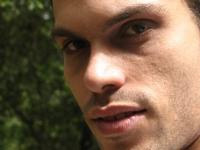
|
 |
 |
 Technology News | April 2008 Technology News | April 2008  
Scientists Teach a Computer to Recognize Attractiveness in Women
 George Hunka - American Friends of Tel Aviv University George Hunka - American Friends of Tel Aviv University
go to original


| | Amit Kagian | | |
“Beauty,” goes the old saying, “is in the eye of the beholder.” But does the beholder have to be human?

Not necessarily, say scientists at Tel Aviv University. Amit Kagian, an M.Sc. graduate from the TAU School of Computer Sciences, has successfully “taught” a computer how to interpret attractiveness in women. Kagian published the findings in the scientific journal Vision Research. Co-authors on the work were Kagian’s supervisors Prof. Eytan Ruppin and Prof. Gideon Dror. The study combined the worlds of computer programming and psychology, an example of the multidisciplinary research for which TAU is world-renowned.

But there’s a more serious dimension to this issue that reaches beyond mere vanity. The discovery is a step towards developing artificial intelligence in computers. Other applications for the software could be in plastic and reconstructive surgery and computer visualization programs such as face recognition technologies.

From Mathematics to Aesthetics

"Until now, computers have been taught how to identify basic facial characteristics, such as the difference between a woman and a man, and even to detect facial expressions," says Kagian. “But our software lets a computer make an aesthetic judgment. Linked to sentiments and abstract thought processes, humans can make a judgment, but they usually don't understand how they arrived at their conclusions.”

In the first step of the study, 30 men and women were presented with 100 different faces of Caucasian women, roughly of the same age, and were asked to judge the beauty of each face. The subjects rated the images on a scale of 1 through 7 and did not explain why they chose certain scores. Kagian and his colleagues then went to the computer and processed and mapped the geometric shape of facial features mathematically.

Additional features such as face symmetry, smoothness of the skin and hair color were fed into the analysis as well. Based on human preferences, the machine "learned" the relation between facial features and attractiveness scores and was then put to the test on a fresh set of faces.

Says Kagian, "The computer produced impressive results – its rankings were very similar to the rankings people gave." This is considered a remarkable achievement, believes Kagian, because it’s as though the computer “learned” implicitly how to interpret beauty through processing previous data it had received.

Beauty is Golden

The notion that beauty can be boiled down to binary data and interpreted by a mathematical model is nothing new. More than 2,000 years ago the Greek mystic, philosopher and mathematician Pythagoras observed the connection between math, geometry and beauty. He reasoned that features of physical objects corresponding to the “golden ratio” were considered most attractive.

“I know that Plato connected the good to the beautiful,” says Kagian. “Personally, I believe that some kind of universal correctness to beauty exists in nature, an aesthetic interpretation of the universal truth. But because each of us is trapped with our own human biases and personalized viewpoints, this may detract us from finding the ultimate formula to a complete understanding of beauty.”

Kagian, who studied under the Adi Lautman multidisciplinary program for outstanding students at Tel Aviv University, says that a possible next step is to teach computers how to recognize “beauty” in men. This may be more difficult. Psychological research has shown that there is less agreement as to what defines “male beauty” among human subjects. And his own portrait, jokes Kagian, will not be part of the experiment.

“I would probably blow up the machine,” he says.

American Friends of Tel Aviv University supports Israel’s largest and most comprehensive center of higher learning. It is ranked among the world’s top 100 universities in science, biomedical studies, and social science, and rated one of the world’s top 200 universities overall. Internationally recognized for the scope and groundbreaking nature of its research programs, Tel Aviv University consistently produces work with profound implications for the future. | 
 | |
 |



